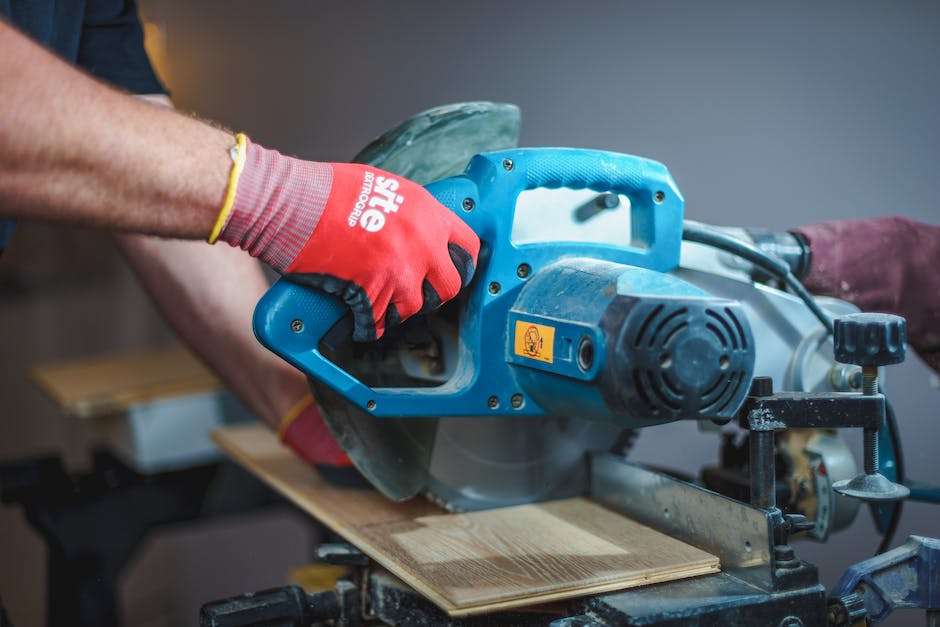In this comprehensive guide, we will delve into the various uses of cut off saws, exploring their applications in different industries and providing valuable insights on choosing the right type of cut off saw. Whether you’re a construction professional, a metalworker, or simply interested in understanding the versatility of cut off saws, this article will equip you with the knowledge needed to make informed decisions and achieve optimal results. Join us as we explore the world of cut off saws and discover their wide-ranging applications.
Table of Contents
Toggle1. What is a Cut Off Saw?
Before we dive into the various uses of cut off saws, it’s important to have a clear understanding of what they are. Cut off saws, also known as abrasive saws or chop saws, are mechanical tools designed to make precise and straight cuts through hard materials such as metal, wood, concrete, or plastic. These power tools consist of a motorized base, a circular blade, and a handle for operating the machine. By utilizing high-speed abrasive or diamond-tipped blades, cut off saws generate friction and heat to achieve clean and accurate cuts.
2. Different Types of Cut Off Saws
To fully grasp the potential uses of cut off saws, it’s essential to explore the different types available in the market. Understanding the distinctions between electric, gasoline-powered, and pneumatic cut off saws will help you choose the most suitable option for your specific needs.
Electric Cut Off Saws:
Electric cut off saws have gained popularity among both DIY enthusiasts and professionals due to their versatility and ease of use. Powered by electricity, these saws are ideal for indoor use or areas with a readily available power supply. Electric cut off saws are often lightweight, compact, and emit less noise compared to their gasoline-powered counterparts. They are well-suited for smaller cutting tasks and projects that require portability.
Gasoline-Powered Cut Off Saws:
When it comes to heavy-duty applications, gasoline-powered cut off saws excel. Equipped with a two-stroke engine, these robust machines provide high power and are capable of operating in remote locations or areas without electricity. Construction sites, roadwork projects, and other demanding environments commonly rely on gasoline-powered cut off saws. Available in various sizes, these saws offer flexibility and cutting capabilities for different materials.
Pneumatic Cut Off Saws:
Pneumatic cut off saws, also known as air-powered saws, utilize compressed air as their power source. They find their niche in industrial settings where a compressed air source is readily available. Renowned for their high power and durability, pneumatic cut off saws are ideal for heavy-duty applications. Metal fabrication shops and automotive repair facilities often rely on these saws for their cutting needs.

3. Applications of Cut Off Saws:
Now that we have a solid understanding of cut off saws and their various types, let’s explore their extensive applications across different industries. From construction to metalworking, landscaping to demolition work, cut off saws have become indispensable tools in achieving precise and efficient cuts.
3.1 Construction Industry:
In the construction industry, cut off saws play a vital role in a wide array of tasks. From cutting through concrete, brick, and asphalt to creating openings for doors and windows, these saws enable construction professionals to work with precision and efficiency. Cut off saws are instrumental in cutting expansion joints, making precise cuts in slabs and walls, and even removing damaged sections. Contractors rely on cut off saws to save time and effort, as they provide accurate cuts and reduce the need for manual labor.
3.2 Metalworking Industry:
In the realm of metal fabrication and manufacturing, cut off saws are essential tools. They enable metalworkers to make precise cuts on various materials, including stainless steel, aluminum, and mild steel. Whether it’s cutting metal rods, pipes, or profiles, cut off saws are capable of achieving clean and straight cuts, ensuring the desired dimensions for a wide range of projects. The accuracy and efficiency of cut off saws significantly contribute to the success of metalworking operations.
3.3 Landscaping and Outdoor Projects:
Cut off saws also find valuable applications in landscaping and outdoor projects. These versatile tools can cut through materials such as pavers, stones, and concrete blocks, making them ideal for creating pathways, patios, and retaining walls. Additionally, cut off saws assist in trimming tree branches and cutting wooden planks for outdoor structures like pergolas and fences. Landscapers and outdoor enthusiasts rely on the precision and power of cut off saws to bring their visions to life.
3.4 Demolition Work:
During demolition work, cut off saws play a crucial role in the removal of damaged or unwanted materials. With their ability to cut through various structures, including walls, floors, and other elements, cut off saws enable controlled and precise demolition. Contractors use cut off saws to dismantle and remove materials efficiently, minimizing the risk of damage to surrounding structures. The power and versatility of these saws make them essential tools in the demolition industry.

4. Choosing the Right Cut Off Saw:
With the multitude of options available, choosing the right cut off saw for your specific needs can be a daunting task. To ensure you make an informed decision, consider the following factors:
4.1 Power Source
Evaluate whether an electric, gasoline-powered, or pneumatic cut off saw suits your intended applications. Assess the availability of power sources and the nature of your projects to select the most appropriate option.
4.2 Blade Size and Material
Select a blade size that matches the thickness of the materials you will be cutting. Additionally, consider the material composition of the blade itself. Blades with diamond-tipped edges are ideal for cutting hard materials like concrete and stone, while abrasive blades are more suitable for metal cutting.
4.3 Safety Features
Ensure that the cut off saw you choose incorporates essential safety features such as blade guards, anti-kickback mechanisms, and ergonomic designs. These features enhance operator safety and minimize the risk of accidents during operation.
4.4 Portability and Ease of Use
If you require mobility or plan to work in different locations, prioritize a lightweight and portable cut off saw. Consider features such as adjustable handles and maneuverability to ensure comfort and convenience during operation.
By carefully considering these factors, you can select a cut off saw that aligns with your specific requirements, enabling you to achieve optimal results in your cutting tasks.

5. Tips for Safe and Efficient Use of Cut Off Saws:
To ensure both your safety and the efficiency of your cut off saw, it’s crucial to follow these tips:
5.1 Wear Appropriate Safety Gear:
Always prioritize safety by wearing safety goggles, ear protection, gloves, and a dust mask when operating a cut off saw. This protective gear safeguards you from potential hazards such as flying debris, loud noises, and dust particles.
5.2 Check the Blade and Machine Condition:
Before each use, inspect the blade for signs of damage or wear. Ensure the blade is properly mounted and tightened. Additionally, inspect the machine itself for loose parts or faulty components that may affect its operation. Address any issues promptly to prevent further damage and ensure safe operation.
5.3 Secure the Workpiece:
To minimize the risk of accidents, secure the workpiece firmly using clamps or other appropriate methods to prevent movement during cutting. This ensures stability and reduces the chances of the workpiece shifting unexpectedly.
5.4 Follow Proper Cutting Techniques:
Adhere to recommended cutting techniques, such as maintaining a steady cutting speed and applying appropriate pressure. Avoid forcing the blade or exerting excessive pressure, as it may lead to blade damage or kickback. By following proper cutting techniques, you can achieve better results while ensuring your safety.

6. Maintenance and Care of Cut Off Saws:
Regular maintenance and care are crucial to prolonging the lifespan of your cut off saw and ensuring its optimal performance. Consider the following guidelines:
6.1 Cleaning and Lubrication:
After each use, clean the cut off saw thoroughly to remove dust, debris, and other particles that may affect its operation. Lubricate moving parts as recommended by the manufacturer to reduce friction and ensure smooth operation.
6.2 Blade Maintenance
Regularly inspect the blade for wear and tear. Replace worn-out or damaged blades promptly to maintain cutting efficiency and prevent accidents. Follow the manufacturer’s instructions for blade replacement and sharpening.
6.3 Regular Inspections
Periodically inspect the entire cut off saw for loose screws, damaged cords, or any other signs of wear. Address any issues immediately to prevent further damage and ensure safe operation.
By practicing regular maintenance and care, you can maximize the lifespan of your cut off saw and ensure its optimal performance in the long run.
7. Conclusion
Cut off saws are versatile and powerful tools that find applications in various industries. From construction and metalworking to landscaping and demolition work, these tools enable professionals to achieve precise and efficient cuts, saving time and effort. By selecting the right type of cut off saw, following safety guidelines, and practicing regular maintenance, you can ensure both your safety and the success of your cutting tasks.
Remember, choosing the appropriate cut off saw for your specific needs is crucial. Consider factors such as power source, blade size and material, safety features, and portability when making your selection. By prioritizing safety, following proper cutting techniques, and maintaining your cut off saw regularly, you can enhance your cutting experience and achieve optimal results.
Thank you for joining us on this comprehensive journey through the uses of cut off saws. We hope this guide has provided you with valuable insights and information. Happy cutting!
FAQs
Q1: Can I use a cut off saw to cut through stainless steel?
Yes, cut off saws equipped with the appropriate blade can cut through stainless steel efficiently. Select a blade specifically designed for stainless steel cutting to achieve the best results.
Q2: Are cut off saws suitable for cutting curves and angles?
Cut off saws are primarily designed for straight cuts. For curves and angles, other tools such as jigsaws or angle grinders may be more suitable.
Q3: How often should I replace the blade on my cut off saw?
The blade replacement frequency depends on usage and the type of materials being cut. Regularly inspect the blade for signs of wear or damage. Replace the blade when it becomes dull or shows significant wear to maintain cutting efficiency and safety.
Q4: Can I use a cut off saw indoors?
Electric cut off saws are suitable for indoor use due to their lower noise levels and absence of exhaust emissions. Ensure proper ventilation and follow safety guidelines when using any power tool indoors.
Q5: Can I use a gasoline-powered cut off saw at high altitudes?
Gasoline-powered cut off saws may experience performance issues at high altitudes due to reduced oxygen levels. Consult the manufacturer’s guidelines for specific recommendations regarding altitude usage.






